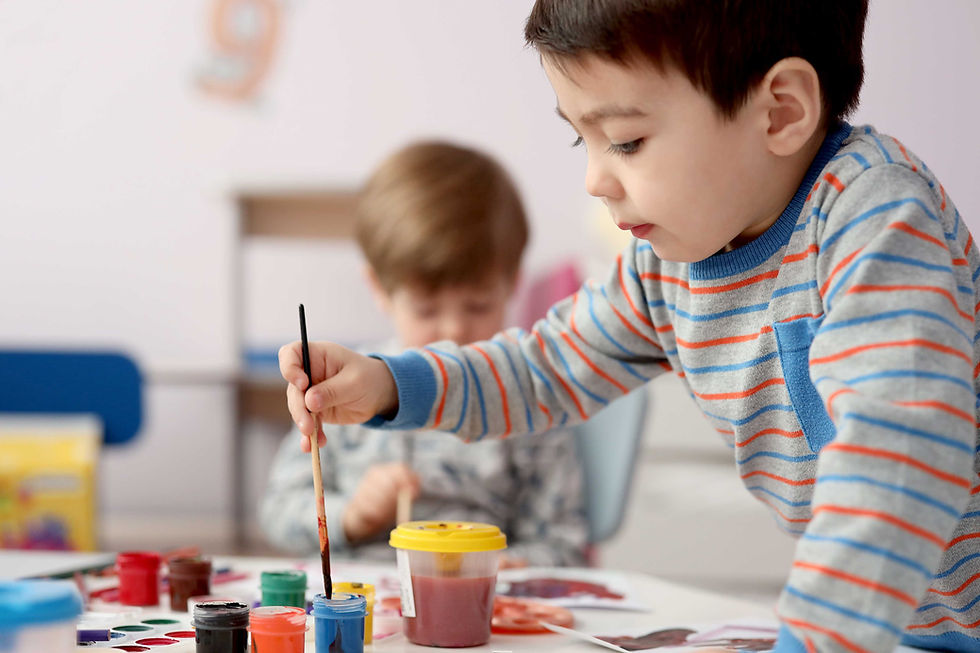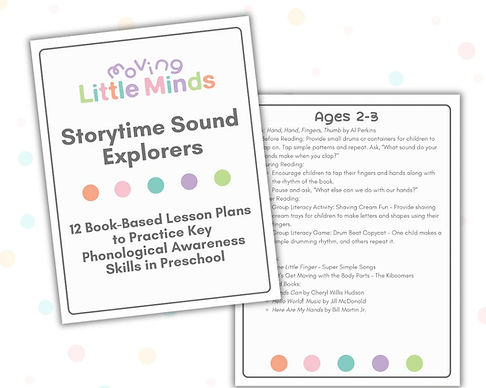Student Centered Learning in Preschool
- Melissa McCall
- Sep 3, 2024
- 4 min read
Updated: Jun 5
What is a Student Centered Learning Environment?

It is the beginning of the year. The time of year as a preschool teacher that is both exciting and sometimes stressful. A new class of sweet littles ones brings a new sense of joy, but also comes with a period of adjustment. Teaching the rules and routines of the classroom takes time, dedication and consistency. New children bring new personalities, interests, and strengths and needs. This period of adjustment is our time as teachers to learn, take note, and begin to mold a classroom environment that focuses on child-led learning.
Student centered learning is an approach where the child takes the lead in choosing activities and exploring their interests. Teachers and caregivers observe what the child is naturally drawn to and use those interests as a foundation for teaching.
Think of it as setting up a fun classroom environment full of rich learning centers and observing what children choose and how they play. Once you are clear on learning interests of the child and you see common themes in the classroom as a whole, you can adjust your learning themes and teaching approaches to match those interest. By appealing to their interests, educators can create meaningful and fun learning experiences that foster curiosity and a love of learning.
For example, imagine a child that consistently played with the dinosaurs in your classroom. Every single day he would rush to the center that had the dinosaurs and was constantly telling you facts about them. However, this same child struggled with fine motor skills. He never wanted to go to the art or writing centers, and holding writing materials and scissors was a struggle. What could you do? Brainstorm ways to build key learning and developmental skills through his love for dinosaurs.
Here are some examples how:
Tape crayons to the dinosaur's legs and color with the dinosaur.
Work with the child to create a background with land and trees for the dinosaurs to play. This is where the scissors come into play!
Write the names of a few dinosaurs on a notecard and encourage the child to use ABC stamps to stamp the different names.
Lay out dinosaur stickers in the writing centers to encourage the child to create a scene.
By doing these things, we are not forcing the child to choose an undesired activity. If he is not interested, that is ok! We are, however, appealing to the interests of the child, creating a meaningful learning environment, and serving as the guide for valuable learning to take place.
How to Foster a Student-Centered Learning Environment in Preschool

1. Create an Inviting Environment: Design a classroom with various learning centers (e.g., art, science, reading, dramatic play) that offer a wide range of materials and activities for children to explore. Ensure that these centers are easily accessible and regularly updated to reflect children's interests.
2. Observe and Listen: Pay close attention to the children’s interests and behaviors. Observe what excites them, what questions they ask, and how they interact with their environment. Use these observations to introduce new materials or expand on topics that captivate them. Grab our free checklist to aid in this data collection below!
3. Offer Choices: Provide opportunities for children to make choices throughout the day. This can include choosing which activities to engage in, selecting materials, or deciding how to solve a problem. Allowing choices empowers children and helps them take ownership of their learning.
4. Encourage Exploration and Play: Allow ample time for free play and exploration. During play, children naturally engage in problem-solving, experimentation, and creative thinking. Avoid directing their play unless they seek help or guidance. Do, however, join in on the fun when appropriate!
5. Facilitate Rather Than Direct: Act as a facilitator by providing resources, guiding discussions, and offering support without taking over. For example, if a child shows interest in insects, you might bring in a magnifying glass, books about bugs, or organize a bug hunt, but let the child lead the activity.
6. Incorporate Interests into Learning Goals: Use children's interests as a springboard for achieving learning goals. For example, if a child is fascinated by cars, you might integrate counting toy cars, putting alphabet stickers on the hoods of the cars, or reading car-themed books to build literacy and math skills.
7. Be Flexible and Adaptable: Be willing to adapt plans based on the children's changing interests. If an activity isn’t engaging them, be open to shifting gears and exploring a new direction that resonates more with the group. This is particularly valuable in free choice centers and toy rotation.
Fostering student centered learning in a preschool classroom involves creating a supportive environment where children feel free to explore, make choices, and follow their natural curiosity, all while being gently guided and supported by the teacher.
Moving Little Minds Observation Checklist

During the first few weeks of school, use the checklist to observe and record each child’s learning and play preferences as they engage in various classroom activities. As the children explore different centers and materials, note which activities draw the most interest, how often they return to these activities, and their level of engagement. This initial observation period will help you gather valuable insights into each child’s unique preferences and strengths.
Once you have collected this information, you can use it to tailor your instruction and classroom environment to better support each child’s individual learning needs. For example, if you notice a child shows a strong interest in sensory play, you can incorporate more sensory activities into their daily routine. If another child is more drawn to building and constructing, consider providing additional building materials and challenges to keep them engaged.
By aligning your classroom activities with the children’s interests, you can create a more personalized and effective learning experience that fosters growth and enthusiasm for learning.
Download your copy below!
You Have the Information. Now What?
Let's Teach with Our Children in Mind!


We believe that every child deserves a bright future, and this begins with a strong foundation in early literacy skills. At Moving Little Minds, we are dedicated to providing research-based literacy activities in fun and engaging ways! By merging instruction with play, we ensure that children are reaching their full potential and embark on their educational journey well-prepared for the future! Let's build those KEY emergent literacy skills together.






















%20(52).jpg)

Comments